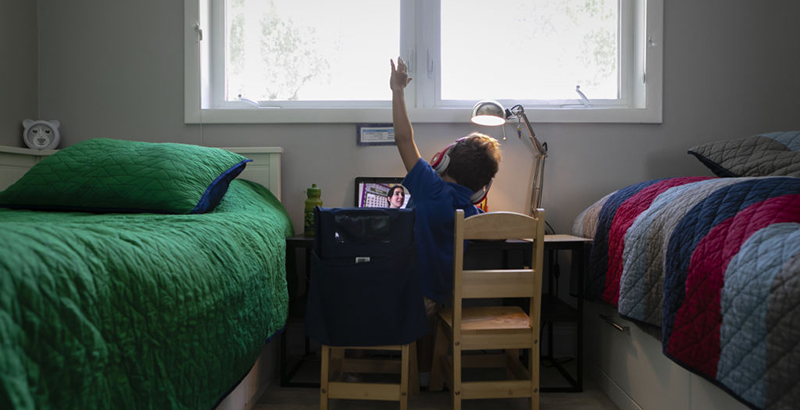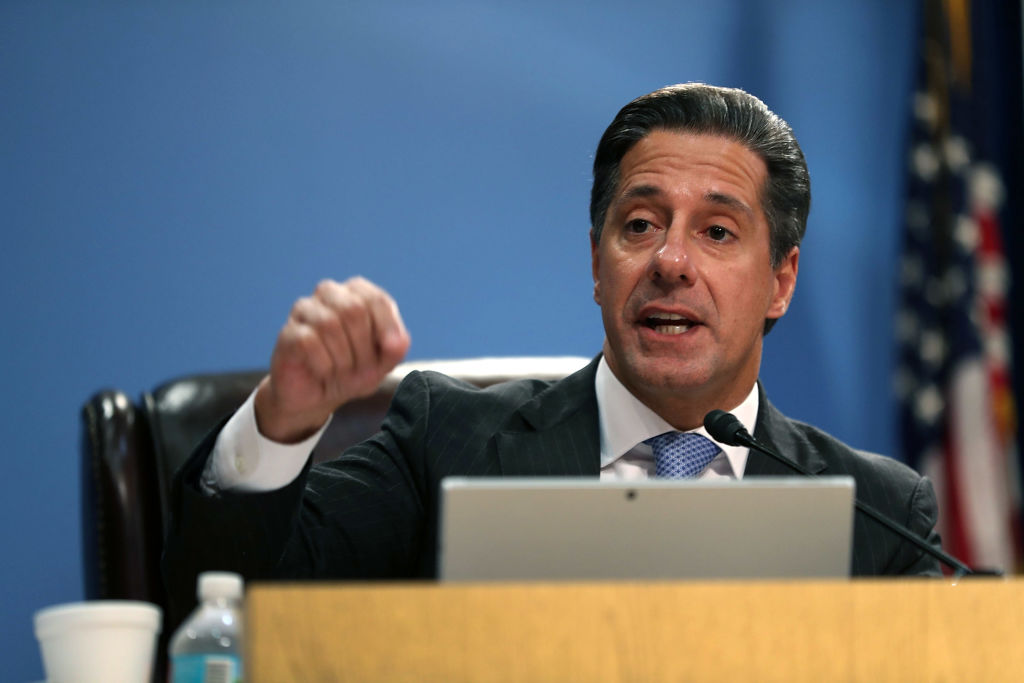Miami Data Could Offer Dire Warning of ‘Unfinished Learning’ Nationwide, With 54% of District Students Testing Below Grade Level in Math

Get essential education news and commentary delivered straight to your inbox. Sign up here for The 74’s daily newsletter.
In what could be a bellwether for schools across the U.S., young students in the nation’s fourth-largest school district are doing poorly on basic academics, recent data suggest, a key sign that pandemic schooling is taking a bracing toll.
Officials with Florida’s Miami-Dade County Public Schools earlier this month reported that 43 percent of students who took January diagnostic tests in grades pre-K-3 tested below grade level in reading. And 54 percent tested below grade level in math.
Students in both at-home and in-person settings took the online tests.
The district educates some 334,000 students, more than nearly every district in the U.S., with the exception of New York City, Los Angeles, and Chicago.
An assessment expert said the Miami-Dade findings will likely be repeated nationwide as districts assess students more fully, and may actually underplay the extent of the crisis.
“The national trends are pointing in a direction at least as severe as what’s happening in Miami-Dade, and likely more severe,” said Kristen Huff, vice president of assessment and research at Curriculum Associates, a Massachusetts-based firm whose tests are used in schools in the district and elsewhere nationwide. “These numbers from Miami-Dade are deeply troublesome, but the national picture, I think, is much more troublesome.”
The Miami-Dade findings are the latest to emerge in large districts nationwide since the school year began. Elsewhere, districts and advocacy groups have rung similar alarms. In Los Angeles, the group Great Public Schools Now in late March issued a report that said the city’s children are in “an unprecedented educational crisis.” In Fairfax County, Virginia’s largest school district, officials in November said the percentage of middle- and high-school students earning F’s in at least two classes rose from 6 percent to 11 percent in the first quarter last fall.
Nationwide, the consulting firm McKinsey has predicted that U.S. students by this fall may have lost as much as a year of learning.
Miami-Dade school board member Mari Tere Rojas, who requested the testing data, noted that the problem is worse among older students, the Miami Herald reported. While just 15 percent of pre-K students tested behind grade level in reading and 13 percent in math, among third-graders the data showed that 27 percent were behind in reading and 40 percent in math.
Recent findings suggest that among third-graders nationally who took Curriculum Associates’ iReady tests last winter, 41 percent were below grade level in reading and 68 percent in math.
Among these students, another 22 percent were two or more grade levels below where they should be to do grade-level reading work, while 18 percent were two or more grade levels below in math.
About 8 million students take the iReady tests, according to the company’s website.
The district is already moving to limit the damage from the past year or more of disruption. Lissette Alves, Miami-Dade’s assistant superintendent for curriculum and instruction, told the school board on May 12 that students identified as performing below grade level in reading based on a September assessment are already receiving more help, which can amount to an extra 30 minutes of daily reading or, in worse cases, an additional hour of intensive reading instruction.
They’re also planning to scale up an intensive reading and math summer school program for more than 65,000 students, with plans to use federal Covid relief funds to get students tutors and other kinds of extra help.

Miami parent Kimberli Nelson said her son Maddox, a first-grader at George Washington Carver Elementary School in Coral Gables, Fla., is “doing well with school from an academic perspective. But he pretty much just learned to sit quietly and draw pictures all day.”
Nelson said her son, who has been identified as gifted, had more difficulties with the “psychological element” of school disruption. To fight isolation, she said, “We had to just break out” and visit friends.
Nelson, a Black parent who grew up in Chicago, said the pandemic has been doubly hard for poor students, as well as students of color. Many of these students, she said, have parents who are essential workers and can’t supervise their at-home learning. “We’re having two pandemics, based upon race and poverty.”
The new achievement data were first reported by the Herald. Miami-Dade officials have said that one of their biggest concerns revolves around the estimated 10,000 students who never showed up for school — as well as 10,300 online-only students identified as at risk of failing.
In January, the district sent letters to at-risk students, urging them to return to in-person school. Of 5,400 contacted, about 3,600 have returned to classrooms.

The district did not respond to a request for comment. In March, Miami-Dade Superintendent Alberto Carvalho told the school board that about 500 students remained missing, the Herald reported at the time. Most of these, he said, are English-language learners whose parents moved and whose phones were disconnected.
Nelson said she has worked with a community center and neighborhood afterschool program known as The Barnyard to support families and, in some cases, find students who couldn’t otherwise be located.
She credited the center’s longtime director, Sylvia Jordan, with tracking down many neighborhood kids. “If you can’t find them, Miss Sylvia can,” Nelson recalled telling district officials. “Some of our kids were going after school — they just weren’t going to school.”
In the district, the new achievement findings have been greeted with a mixed reception.
Board member Rojas called the data “alarming,” but Carvalho said he and his staff are approaching them with “trepidation” and “doubt,” since students learning from home may have had parental help on the tests — those in school, he said, may not have had the same assistance.
“It is data that we’re not going to take to the bank as we have in the past,” he told board members.
But Curriculum Associates’ Huff said she doesn’t suspect “widespread cheating” from students who took iReady tests at home. Even if students got help from family members, she said, she doubts there was intention to cheat.
“I think it was very innocent helping, because adults, older siblings, or others in the home did not realize that these young students — first, second, third graders — that they were taking a test that needed to happen independently. And if they had known that, they likely would not have helped — just like a parent would never help their child try to pass an eye test.”
So-called “Covid learning loss” has obsessed educators and researchers for the better part of a year, but Huff said the term doesn’t accurately describe what’s happening to students. She prefers the term “unfinished learning.”
“I do think it’s more accurate because a lot of what has happened is just less instructional time,” she said. “Students have not had the opportunity to learn. They didn’t have learning to lose. They were just not finished doing the learning that we would expect, given the circumstances of the past year.”
Get stories like these delivered straight to your inbox. Sign up for The 74 Newsletter

;)
